Trees, Shrubs and Woody Vines
Media

Species Types
Scientific Name
Koelreuteria paniculata
Description
Golden rain tree is native to China, Korea, and Japan. It was cultivated in Missouri for years. Because it readily escapes from cultivation and is invasive, it is no longer recommended for planting in Missouri.
Media

Species Types
Scientific Name
Cercis canadensis
Description
Eastern redbud is a native shrub or small tree that is distinctly ornamental in spring with small, clustered, rose-purple flowers covering the bare branches before the leaves.
Media
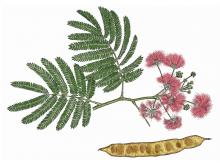
Species Types
Scientific Name
Albizia julibrissin
Description
Grown as an ornamental for its attractive pink flower clusters, gracefully spreading branches, and delicate leaves, mimosa is easily propagated and grows rapidly. Unfortunately, it is also an invasive exotic in much of the state.
Media
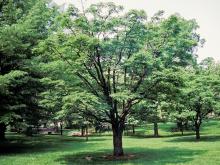
Species Types
Scientific Name
Phellodendron amurense
Description
Amur corktree is a non-native tree that is becoming naturalized in our state. Originally introduced for landscape planting, it has proven itself invasive in the northeastern United States and has shown invasive tendencies in St. Louis.
Media
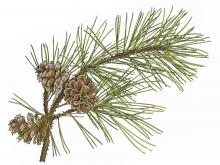
Species Types
Scientific Name
Pinus echinata
Description
Existing in thousands of acres of nearly pure stands, shortleaf pine was once the dominant tree in much of the Missouri Ozarks. Today, Missouri’s only native pine tree is recovering from the extensive logging that had exhausted its old-growth stands by the 1920s.
Media
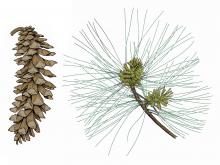
Species Types
Scientific Name
Pinus strobus
Description
A native to much of eastern North America, eastern white pine has been widely introduced in Missouri and sometimes reproduces on its own.
Media

Species Types
Scientific Name
Pinus banksiana
Description
Native to the northeastern United States and Canada, jack pine has been introduced in many other places, including Missouri. This scrubby tree is planted as an ornamental, for windbreaks, or for erosion control. It reproduces locally in and around places where it has been planted.
Species Types
Scientific Name
Tsuga canadensis
Description
Eastern, or Canadian hemlock is usually encountered only in landscaping in Missouri. But based on one instance in Oregon County, we know it can reproduce and spread here on its own. So if you find it on a hike, it was almost certainly planted there at some point. Look around for a cistern, old home foundation, and other persisting garden plants nearby.
Media
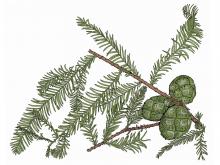
Species Types
Scientific Name
Taxodium distichum
Description
Bald cypress is an “evergreen” tree that is not evergreen! Like the leaves of hardwoods, its needles turn yellow in the fall and are shed. A tree associated with swamps, its impressive form also graces many public landscapes.
Media

Species Types
Scientific Name
Juniperus virginiana
Description
By far the most common native conifer in the state, eastern red cedar is useful for its aromatic, red wood and beloved for its greenery, its resinous blue “berries,” and the spicy odor it lends the outdoors.
See Also
About Trees, Shrubs and Woody Vines in Missouri
There are no sharp dividing lines between trees, shrubs, and woody vines, or even between woody and nonwoody plants. “Wood” is a type of tissue made of cellulose and lignin that many plants develop as they mature — whether they are “woody” or not. Trees are woody plants over 13 feet tall with a single trunk. Shrubs are less than 13 feet tall, with multiple stems. Vines require support or else sprawl over the ground.





















